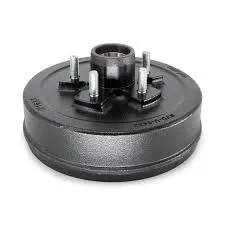
-
 Afrikaans
Afrikaans -
 Albanian
Albanian -
 Amharic
Amharic -
 Arabic
Arabic -
 Armenian
Armenian -
 Azerbaijani
Azerbaijani -
 Basque
Basque -
 Belarusian
Belarusian -
 Bengali
Bengali -
 Bosnian
Bosnian -
 Bulgarian
Bulgarian -
 Catalan
Catalan -
 Cebuano
Cebuano -
 Corsican
Corsican -
 Croatian
Croatian -
 Czech
Czech -
 Danish
Danish -
 Dutch
Dutch -
 English
English -
 Esperanto
Esperanto -
 Estonian
Estonian -
 Finnish
Finnish -
 French
French -
 Frisian
Frisian -
 Galician
Galician -
 Georgian
Georgian -
 German
German -
 Greek
Greek -
 Gujarati
Gujarati -
 Haitian Creole
Haitian Creole -
 hausa
hausa -
 hawaiian
hawaiian -
 Hebrew
Hebrew -
 Hindi
Hindi -
 Miao
Miao -
 Hungarian
Hungarian -
 Icelandic
Icelandic -
 igbo
igbo -
 Indonesian
Indonesian -
 irish
irish -
 Italian
Italian -
 Japanese
Japanese -
 Javanese
Javanese -
 Kannada
Kannada -
 kazakh
kazakh -
 Khmer
Khmer -
 Rwandese
Rwandese -
 Korean
Korean -
 Kurdish
Kurdish -
 Kyrgyz
Kyrgyz -
 Lao
Lao -
 Latin
Latin -
 Latvian
Latvian -
 Lithuanian
Lithuanian -
 Luxembourgish
Luxembourgish -
 Macedonian
Macedonian -
 Malgashi
Malgashi -
 Malay
Malay -
 Malayalam
Malayalam -
 Maltese
Maltese -
 Maori
Maori -
 Marathi
Marathi -
 Mongolian
Mongolian -
 Myanmar
Myanmar -
 Nepali
Nepali -
 Norwegian
Norwegian -
 Norwegian
Norwegian -
 Occitan
Occitan -
 Pashto
Pashto -
 Persian
Persian -
 Polish
Polish -
 Portuguese
Portuguese -
 Punjabi
Punjabi -
 Romanian
Romanian -
 Russian
Russian -
 Samoan
Samoan -
 Scottish Gaelic
Scottish Gaelic -
 Serbian
Serbian -
 Sesotho
Sesotho -
 Shona
Shona -
 Sindhi
Sindhi -
 Sinhala
Sinhala -
 Slovak
Slovak -
 Slovenian
Slovenian -
 Somali
Somali -
 Spanish
Spanish -
 Sundanese
Sundanese -
 Swahili
Swahili -
 Swedish
Swedish -
 Tagalog
Tagalog -
 Tajik
Tajik -
 Tamil
Tamil -
 Tatar
Tatar -
 Telugu
Telugu -
 Thai
Thai -
 Turkish
Turkish -
 Turkmen
Turkmen -
 Ukrainian
Ukrainian -
 Urdu
Urdu -
 Uighur
Uighur -
 Uzbek
Uzbek -
 Vietnamese
Vietnamese -
 Welsh
Welsh -
 Bantu
Bantu -
 Yiddish
Yiddish -
 Yoruba
Yoruba -
 Zulu
Zulu
Jan . 14, 2025 15:19
Back to list
where are drum brakes used
Drum brakes, though often eclipsed by their more modern disc brake counterparts, retain their relevance in several niche applications across various industries. Their design, characterized by brake shoes pressing outward against a rotating drum, offers distinct advantages in specific scenarios that continue to make them a preferred choice.
Smaller vehicles such as motorcycles and scooters sometimes utilize drum brakes as well. While higher-end models might prefer disc brakes for their superior performance, more economically-priced models often feature drum brakes due to their cost-effectiveness. For scooters, which typically operate at lower speeds and in urban environments, the braking power offered by drum brakes is more than adequate. Manufacturers in the automotive industry tend to opt for drum brakes in the rear axles of entry-level cars and many commercial vehicles. This choice is driven by a balance of cost-efficiency and performance. Drum brakes provide sufficient stopping power for rear-wheel duties where the braking demand is less intense than at the front wheels. Their longevity and reduced need for maintenance further enhance their appeal, especially in markets sensitive to cost and upkeep. In global automotive markets, regions where infrastructure might not support rapid and widespread adoption of more advanced braking systems still rely heavily on drum brakes. In such areas, the availability of service and expertise for drum brake maintenance ensures that vehicles can be kept operational without resorting to expensive parts or specialized service. Despite advances in braking technology, drum brakes remain relevant due to their strengths in specific applications. They offer a compelling blend of reliability, cost-effectiveness, and performance in various sectors, from heavy transportation to industrial machinery. Consequently, they maintain a foothold where conditions align with their advantages, proving that sometimes, traditional solutions continue to hold value in an ever-evolving technological landscape.


Smaller vehicles such as motorcycles and scooters sometimes utilize drum brakes as well. While higher-end models might prefer disc brakes for their superior performance, more economically-priced models often feature drum brakes due to their cost-effectiveness. For scooters, which typically operate at lower speeds and in urban environments, the braking power offered by drum brakes is more than adequate. Manufacturers in the automotive industry tend to opt for drum brakes in the rear axles of entry-level cars and many commercial vehicles. This choice is driven by a balance of cost-efficiency and performance. Drum brakes provide sufficient stopping power for rear-wheel duties where the braking demand is less intense than at the front wheels. Their longevity and reduced need for maintenance further enhance their appeal, especially in markets sensitive to cost and upkeep. In global automotive markets, regions where infrastructure might not support rapid and widespread adoption of more advanced braking systems still rely heavily on drum brakes. In such areas, the availability of service and expertise for drum brake maintenance ensures that vehicles can be kept operational without resorting to expensive parts or specialized service. Despite advances in braking technology, drum brakes remain relevant due to their strengths in specific applications. They offer a compelling blend of reliability, cost-effectiveness, and performance in various sectors, from heavy transportation to industrial machinery. Consequently, they maintain a foothold where conditions align with their advantages, proving that sometimes, traditional solutions continue to hold value in an ever-evolving technological landscape.
Next:
Latest news
-
Rear Drum Brakes Maintenance TipsNewsAug.04,2025
-
Key Components Affecting Brake Drum FunctionNewsAug.04,2025
-
Important Inspection for Truck Drum BrakeNewsAug.04,2025
-
How to Prepare for Changing Rear Drum BrakesNewsAug.04,2025
-
Essential Tools for Cleaning Drum Brakes ProperlyNewsAug.04,2025
-
Brake Drum Function GuideNewsAug.04,2025
-
Safety Features of Red Brake DrumsNewsAug.01,2025
